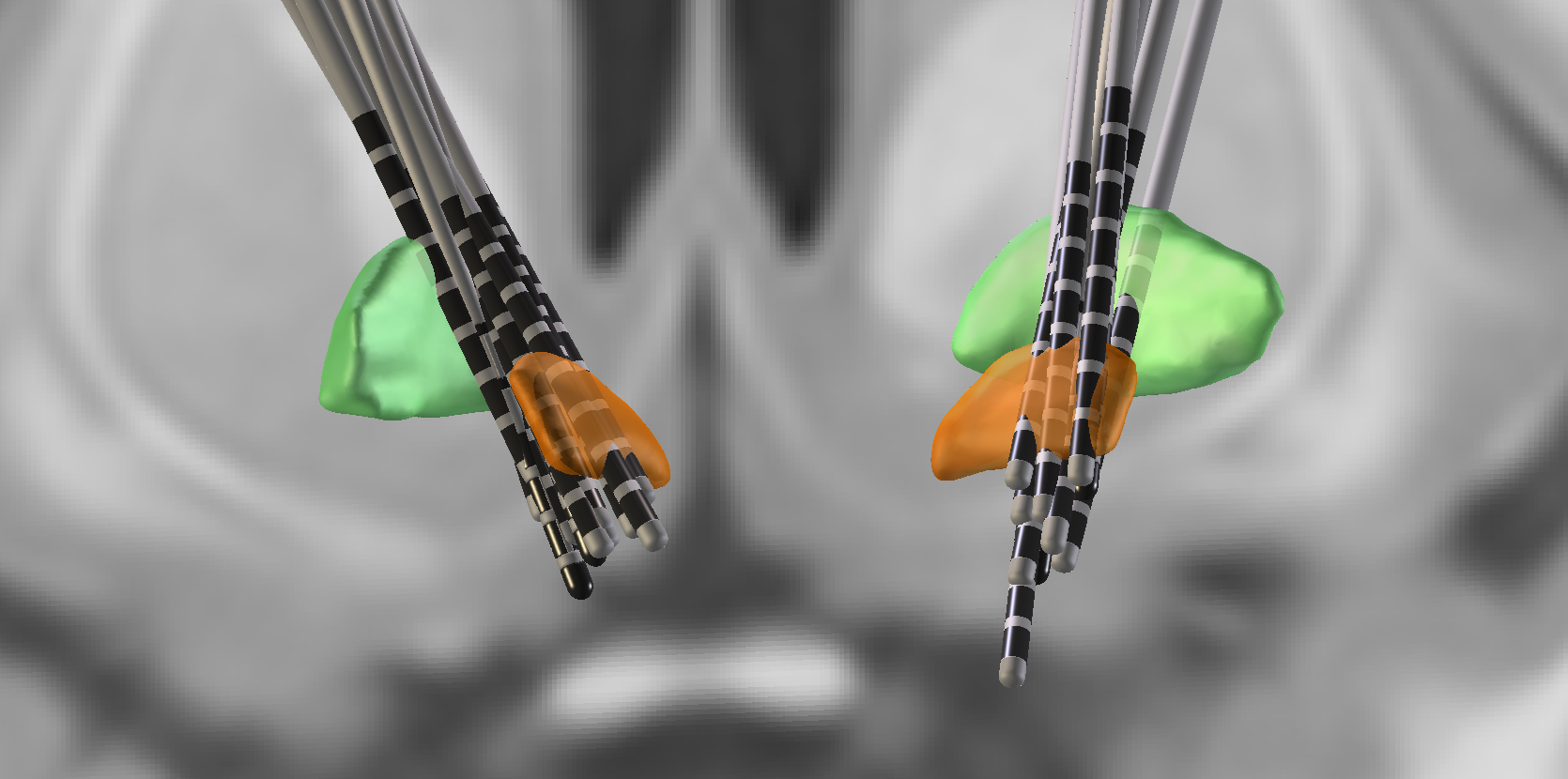Category: Parkinson's Disease: Neurophysiology
Objective: Exploring the effect of deep brain stimulation (DBS) settings on neural oscillations in Parkinson’s disease (PD) patients with subthalamic nucleus (STN) DBS and their relationship to the volume of tissue activated (VTA).
Background: DBS is an effective therapy for PD but requires extensive open-loop programming sessions carried out by trained clinicians with a degree of uncertainty that the selected parameters will be optimal. A recent body of work suggests that therapeutic efficacy can be predicted by mapping the overlap between VTA and target nuclei [1]. While this is not in clinical use, the new Medtronic Percept device enables local field potential recordings so that beta power around the different contacts could be measured to identify the DBS target [2]. Here we bridge those two approaches for optimal target identification by correlating VTA overlap with beta power and neural oscillation features.
Method: EEG recordings were obtained during routine DBS programming sessions using a wireless EEG headset. Unified Parkinson’s Disease Rating Scale (UPDRS)-III was recorded before and after programming. The power of beta and narrowband gamma (NBG) oscillations over the motor cortex, and their bursting features were measured during rest and movement tasks. Individual DBS leads were localised by merging pre-operative MRI and post-operative CT scans in LEAD-DBS [3] [figure1], and the VTAs for both OFF-clinical settings (on arrival) and ON-clinical DBS settings (after a successful programming session) were determined.
Results: We found no significant correlation between the VTA-nuclei overlap and the beta power, but we did find that increase in beta and NBG burst amplitude was strongly correlated with overlap increase. This trend was also significant for pathologic beta bursts >600ms [4], but not NBG. Additionally, an increase in NBG burst duration was also significantly correlated with overlap increase.
Conclusion: Beta and gamma burst amplitude and duration show greater sensitivity to changes in stimulation parameters towards improving overlap with the DBS target. Further exploration of these biomarkers is required towards closed-loop DBS.
References: [1] Dembek TA, et al. Ann Neurol. 2019; 86(4):527–38
[2] Thenaisie Y, et al. J Neural Eng. 2021; 18(4):042002
[3] Horn A, Kühn AA. NeuroImage. 2015; 107:127–35
[4] Tinkhauser G, et al. Brain. 2017; 140(11):2968–81
To cite this abstract in AMA style:
A. Kutuzova, C. Graef, B. Lonergan, Y. Tai, S. Haar. Linking volume of tissue activated to neural oscillations in deep brain stimulation [abstract]. Mov Disord. 2023; 38 (suppl 1). https://www.mdsabstracts.org/abstract/linking-volume-of-tissue-activated-to-neural-oscillations-in-deep-brain-stimulation/. Accessed April 5, 2025.« Back to 2023 International Congress
MDS Abstracts - https://www.mdsabstracts.org/abstract/linking-volume-of-tissue-activated-to-neural-oscillations-in-deep-brain-stimulation/

